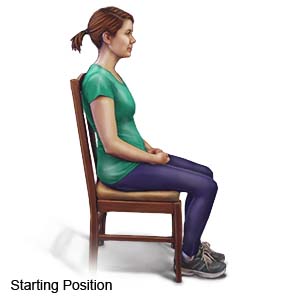WHAT YOU NEED TO KNOW: Why is it important to do neck exercises? Neck exercises help reduce neck pain, and improve neck movement and strength. Neck exercises also help prevent long-term neck problems. What do I need to know about neck exercises? - Do the exercises every day, or as often as directed by your healthcare provider.
- Move slowly, gently, and smoothly. Avoid fast or jerky motions.
- You may feel the exercises in your upper back and shoulders. Back and shoulder movement may help your neck feel better.
- Stand and sit the way your healthcare provider shows you. Good posture may reduce your neck pain. Check your posture often, even when you are not doing your neck exercises.
Exercises: Starting position: You may sit or stand. Face forward. Your shoulders should be straight and relaxed. 
|
- Neck pull backs: Gently pull your head straight back while your chin stays level with the floor. You may push your chin back with your hand. This is a small movement.
- Head tilts, forward and back: Gently bow your head and try to touch your chin to your chest. Your healthcare provider may tell you to push on the back of your neck to help bow your head. Raise your chin back to the starting position. Tilt your head back as far as possible so you are looking up at the ceiling. Your healthcare provider may tell you to lift your chin to help tilt your head back. Return your head to the starting position.
- Head tilts, side to side: Tilt your head, bringing your ear toward your shoulder. Then tilt your head toward the other shoulder.
- Head turns: Turn your head to look over your shoulder. Tilt your chin down and try to touch it to your shoulder. Do not raise your shoulder to your chin. Face forward again. Do the same on the other side.
- Upper back stretch: Stand in the corner of a room. Hold your arms out to your sides with your elbows bent and your fingers pointed up. Place your palms flat on the walls at ear level. Lean your body toward the corner, so you feel a stretch in your upper back and shoulders.
When should I contact my healthcare provider? - Your pain does not get better, even though you do the exercises as directed by your healthcare provider.
- You have questions or concerns about your condition, care, or exercise program.
|